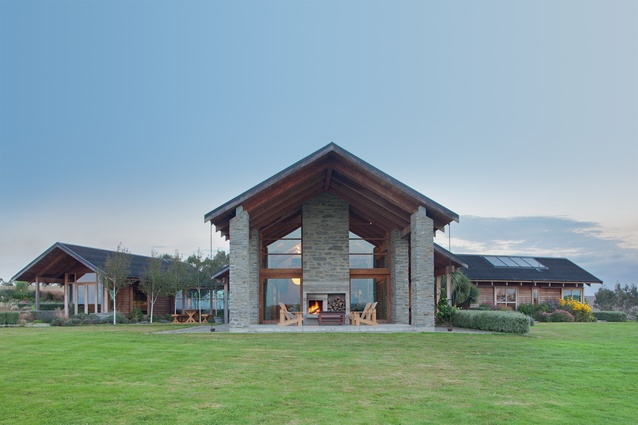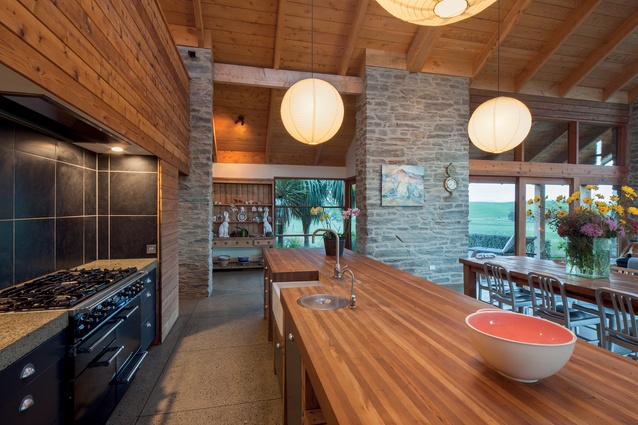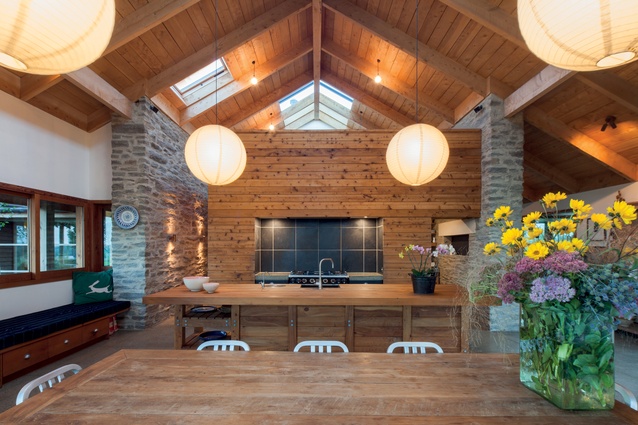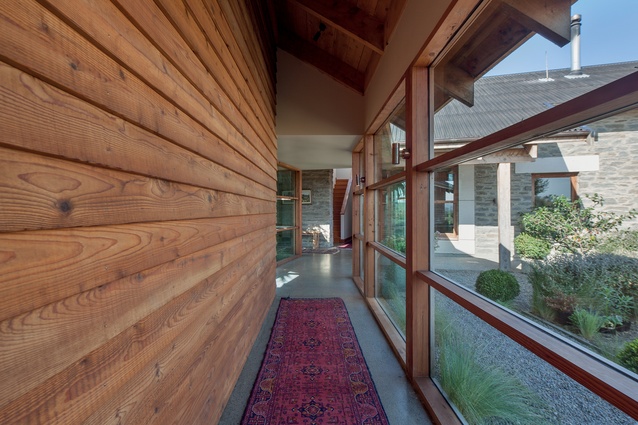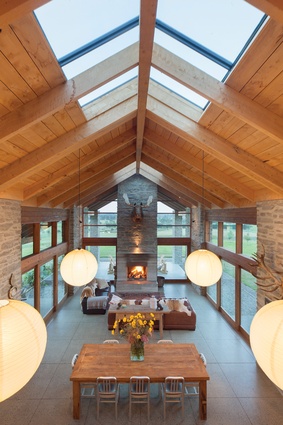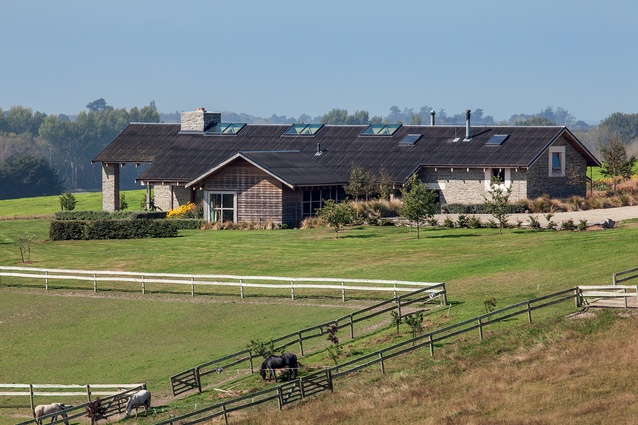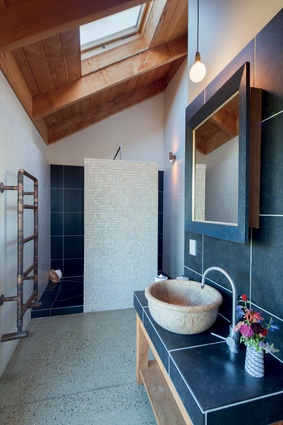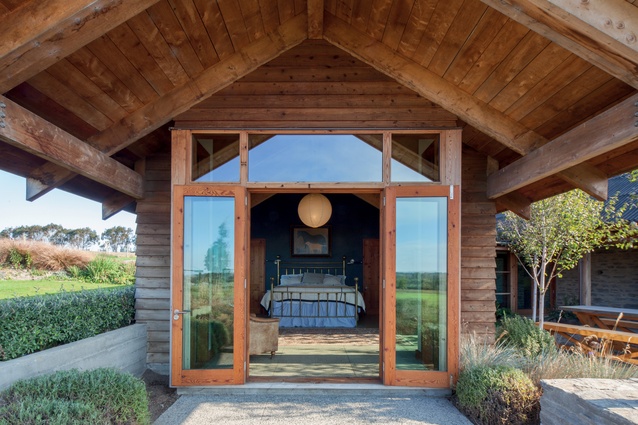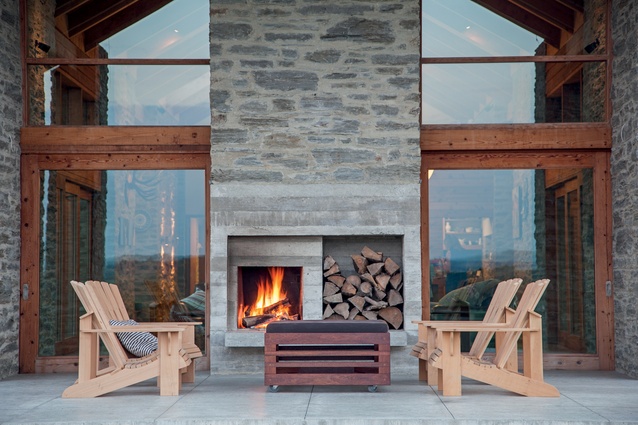Houses revisited: South Canterbury farmhouse
This off-the-grid farmhouse proves that with sustainable architecture size doesn’t matter, first published in 2015.
When someone talks about a house being ‘off grid’, it conjures up images of remote baches that accommodate family and friends over summer when the weather’s warm and the water tank is full. This home, at 330m2, bucks that trend. Located in South Canterbury, it is an energy self-sufficient farmhouse on a block of land with southeasterly views to the Pacific Ocean and towards Mount Hutt to the northwest.
Architect Jarrod Midgley’s grandfather bought the land in the early 1990s and three generations have farmed the land since. “We deliberated for a while on whether to build on it, and how to achieve going off the grid, because it really is a lifestyle decision. You have to be conscious of your consumption.”
Sustainability may lie at the heart of this house, but amenity was equally important. Jarrod and his sister, landscape architect Tusha Midgley, who incidentally designed the landscaping around the home, stood with their parents on the site to determine which would be the most desirable view from the kitchen.
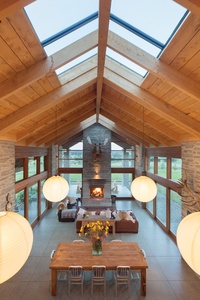
The house, with its voluminous ceilings, large timber beams and hunting décor could be mistaken for a luxury lodge, rather than a sustainable home. Yet, perhaps, this is the blueprint for the new green home. Midgley says as commercial-grade products become more attainable and affordable, clients have more options in consdiering how they will achieve energy efficiency as well as a desired look.
“There are many considerations, including practicality and function, interest, variety of spaces, materials that age well, clarity and cohesiveness of overall form.”
Energy is produced in several ways including a wind turbine and solar panels feeding a bank of batteries. There is also a diesel-powered generator when needed. Additionally, a thermette boiler heats water, which is then piped throughout the house for both domestic hot water to the bathrooms and to the underfloor heating. The concrete flooring also acts as a heat sink, absorbing solar energy throughout the day and releasing it at night.
Canadian oregon timber, salvaged from the Addington Sale Yards, was repurposed as door and window joinery. As well as providing good insulation, it also contributes to the natural aesthetic of the home, as does the cedar, recycled kauri and stone walls.
Design and planning details also contribute to the overall sustainability. The lighting plan, for example, provides adjustable task-style lighting rather than the more traditional ambient lighting of spaces, which uses more energy.
It was not only the environmental impact of energy consumption that determined the design. Although the site offers sea views to the south, the Midgeleys chose instead to locate the home lower down the north-facing slope.
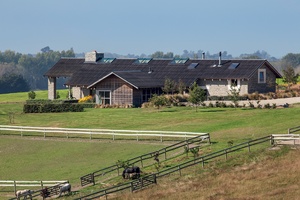
“We preferred for the home to nestle into the landscape, rather than sit atop it and conceded on getting that view,” they say.
The house reaches out from the hill, seemingly growing from single storey to a double-height main living area, whereas in actuality the garage end of the house has been partially set into the hillside.
The resulting massing certainly leaves one feeling awed, a feeling Midgley was able to experience first hand. As the project took longer to complete than expected, he had to hand over the reins to his parents and the foreman, three months shy of completion. When he returned, not having seen it evolve he was able to enjoy the completed result. A good result indeed, when the build has been such a family affair and the home will play host to generations of family occasions.
As Midgley says, the house will stand the test of time, outlasting its various inhabitants and that, he claims, is true sustainability.
Click here to see more Houses Revisited. And sign up to our email newsletters to receive Houses Revisited straight to your inbox.
Note: These are stories from our archives and, since the time of writing, some details may have changed including names, personnel of specific firms, registration status, etc.

